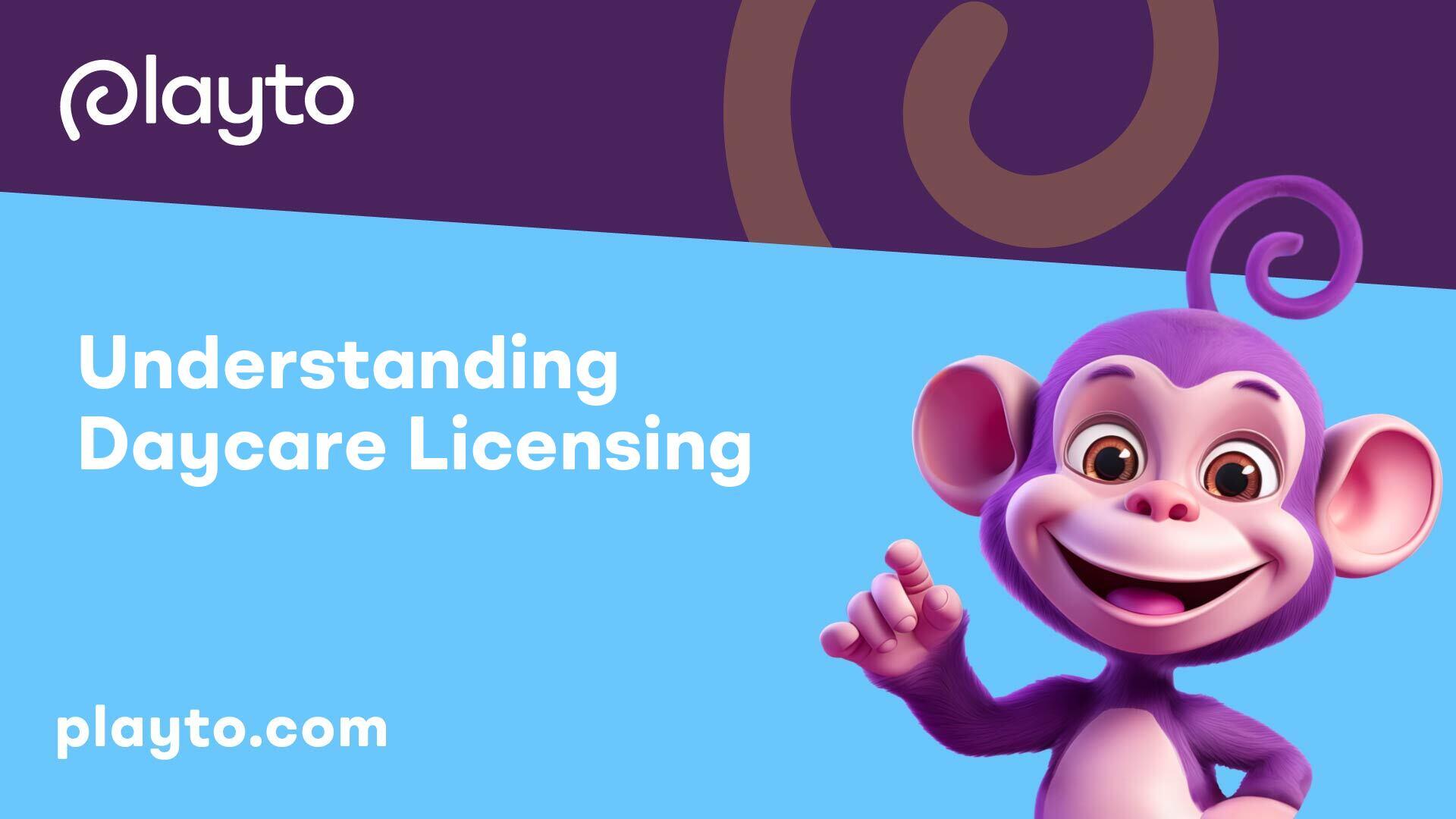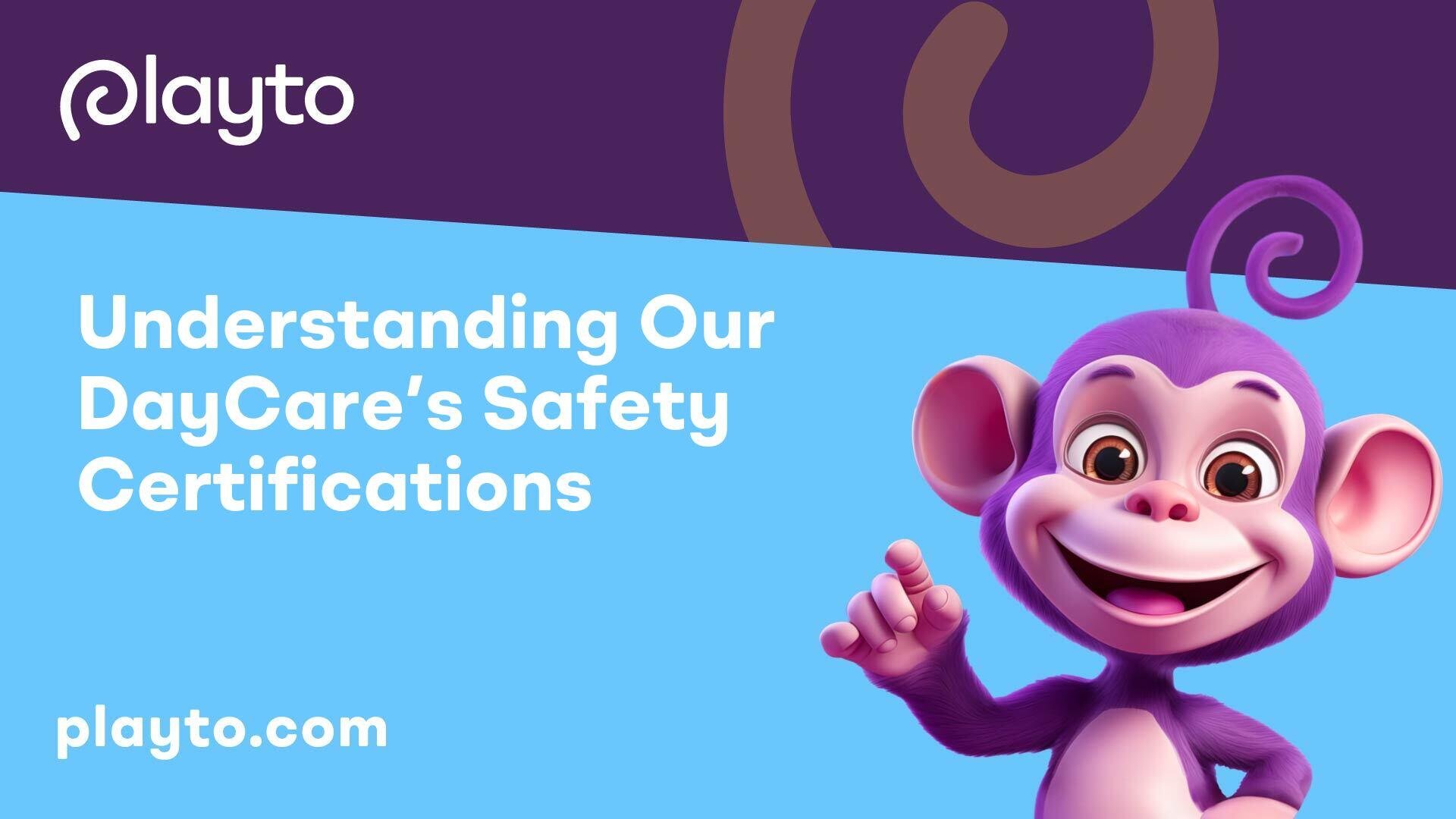Understanding Daycare Licensing

When it comes to operating a daycare, obtaining proper licensing is crucial to ensure compliance with essential health and safety standards. Let's explore the importance of daycare licensing and the distinction between quality and compliance in this realm.
Importance of Licensing
Daycare licensing, overseen by state and territory governments, establishes minimum health and safety requirements that child care programs must adhere to in order to legally operate. Licensing serves as a fundamental framework to guarantee that child care environments promote the well-being and development of children.
By obtaining licensing, daycare providers commit to upholding specific standards that safeguard children's health and safety. These requirements encompass various aspects such as staff qualifications, sanitation practices, emergency preparedness, and more. While licensing sets a baseline for operational standards, it is imperative to understand that it does not directly equate to the quality of care provided.
Quality vs. Compliance
While licensing ensures that daycare programs meet essential health and safety requirements, it does not inherently guarantee quality care. The distinction between compliance and quality lies in the execution and maintenance of standards beyond the basic regulatory mandates.
Quality daycare extends beyond mere adherence to licensing regulations. It encompasses factors such as staff training, curriculum effectiveness, child engagement, and parental involvement. To truly excel in providing high-quality care, daycare facilities should go above and beyond the minimum requirements set by licensing bodies to create nurturing and enriching environments for children.
When evaluating daycare options, it's essential for parents to consider both the licensing status of the facility and indicators of quality care. Striking a balance between compliance with licensing regulations and a commitment to delivering excellence in child care services is essential in creating a safe, supportive, and enriching environment for young learners.
Understanding the interplay between daycare licensing and the pursuit of quality care is key to making informed decisions about childcare options. By recognizing the vital role of licensing in establishing essential health and safety standards and the importance of ongoing quality improvement efforts, parents can navigate the landscape of daycare choices with confidence and clarity.
Staff Qualifications and Training

In the realm of child care facilities, such as our daycare, ensuring that staff possess the necessary qualifications and receive ongoing training is paramount in maintaining a safe and nurturing environment for children. Let's delve into the licensing requirements and the significance of ongoing training for daycare staff.
Licensing Requirements
Licensed child care providers and staff are mandated to meet minimum qualifications to offer appropriate care to children. Supervision requirements dictate that there must be a sufficient number of adults present to supervise children safely, ensure their security, and provide them with adequate attention to foster their development and learning abilities [1].
One of the key aspects of licensing requirements is maintaining appropriate staff-to-child ratios and group sizes. These factors are critical in guaranteeing that children receive the necessary supervision to safeguard their health and well-being within child care settings.
Ongoing Training
Continuous training is essential for daycare staff to stay updated on best practices and advancements in child care. Ongoing training ensures that staff are well-equipped to handle various situations and respond effectively to the needs of the children under their care. It also plays a crucial role in enhancing the quality of care provided at our daycare.
Furthermore, federal law mandates that criminal background checks, including fingerprint checks, are conducted for staff in licensed child care programs and for adults residing in family child care homes. This measure is essential for ensuring the safety and security of children in daycare settings, as it helps screen individuals with potential risks and safeguard children from harm.
The National Association for the Education of Young Children (NAEYC) has established specific guidelines regarding teacher-child ratios and group sizes to uphold the safety and quality of child care services. Adhering to these standards, such as maintaining a teacher-child ratio of 1-to-3 or 1-to-4 for infants and toddlers, sets a benchmark for child care safety and ensures optimal care for children at our daycare [3].
By comprehensively understanding and adhering to both licensing requirements and ongoing training protocols, our daycare aims to provide a secure and nurturing environment where children can learn, grow, and thrive under the care of qualified and dedicated staff.
Reporting Concerns

Ensuring the safety and well-being of children in daycare settings is paramount. In instances where concerns arise about licensed child care programs operating unsafely, individuals have the right to address these issues by filing complaints. This process allows for corrective actions to be taken promptly. Let's delve into the two key aspects of reporting concerns: filing complaints and the subsequent review process.
Filing Complaints
To file a complaint regarding a licensed child care program in the state of New York, individuals can reach out through designated phone lines or online submission forms, as outlined by Childcare.gov. Providing detailed information about the concern, including the name and location of the facility, specific incidents, and any supporting evidence, aids in the investigation process. Timely reporting of any observed safety violations or malpractices is crucial to ensuring the welfare of the children under the program's care.
Review Process
Upon receiving a complaint, the child care licensing staff initiates a thorough review process to assess the validity of the reported concerns. Licensing inspectors conduct evaluations of child care programs to ensure compliance with health and safety regulations, as highlighted by Childcare.gov. These inspections are vital in maintaining a secure and healthy environment for the children attending the program.
Additionally, inspection reports are made available for public review to promote transparency and accountability within licensed child care programs. These reports serve as valuable resources for parents and guardians to verify the adherence of the program to safety protocols and regulations. Any violations or complaints identified during inspections are addressed promptly to mitigate potential risks and preserve the well-being of the children.
It is essential to acknowledge that some child care providers may be exempt from licensing requirements based on specific criteria, as elucidated by the Center for American Progress. Such exemptions introduce a degree of variability in the regulatory framework and oversight of child care programs, warranting vigilance in monitoring safety practices even where licensing is not mandatory.
Reporting concerns and actively engaging in the review process play a vital role in safeguarding the interests of children in daycare settings. By fostering a culture of accountability and compliance, the child care industry can uphold high standards of safety and quality care for its young charges.
License-Exempt Programs

In the realm of child care services, states and territories have the authority to exempt specific programs from licensing requirements. These programs, known as "license-exempt," operate legally without the need for a formal child care license. Understanding the criteria for license exemption and the safety considerations involved in such programs is essential for ensuring the well-being of children under their care.
Criteria for Exemption
Every state and territory may have its own set of criteria for determining which child care programs qualify for license exemption. Generally, both center-based child care programs and in-home child care providers can fall under the category of license-exempt if they meet specific requirements. These requirements vary and can cover aspects such as the nature of the caregiver (relatives or faith-based providers) or the type of services provided. It's important for parents and guardians to be aware of the specific criteria in their locality to make informed decisions about child care options.
Safety Considerations
While license-exempt programs may not be subject to the same licensing regulations as their licensed counterparts, ensuring the safety and well-being of children remains a top priority. Parents should inquire about the safety measures in place, including staff qualifications, supervision ratios, and emergency procedures.
It is crucial for caregivers in both licensed and license-exempt programs to undergo background checks to verify their suitability for working with children. According to the Center for American Progress, as of March 2016, only Maryland and Wyoming had fully implemented comprehensive background check requirements for child care providers. This underscores the need for vigilance in ensuring the safety of children in all types of child care settings.
By understanding the criteria for exemption and the safety considerations associated with license-exempt programs, parents and caregivers can make informed decisions about the child care options that best meet the needs of their families. Knowing the regulations and standards that apply to different types of child care providers enables individuals to advocate for the safety and well-being of children in these settings. It underscores the collective responsibility to ensure that all child care environments prioritize the safety and development of the children in their care.
Federal Mandates on Child Care

Ensuring the safety and well-being of children in childcare facilities is a top priority, and federal mandates outline specific regulations and requirements that must be adhered to. In this section, we will delve into the regulatory requirements and the importance of background checks within the child care setting.
Regulatory Requirements
Licensed child care providers and staff must meet minimum qualifications and receive ongoing training to ensure the provision of appropriate care. Regulatory requirements encompass various aspects of child care operations, including staff-to-child ratios, group sizes, health and safety protocols, and emergency preparedness measures. These regulations are put in place to safeguard the well-being of children and maintain a nurturing environment conducive to their development and learning.
Federal laws mandate that states conduct criminal background checks, including fingerprint checks, for staff in licensed child care programs and individuals residing in family child care homes. Background checks are critical in screening individuals who have direct contact with children, ensuring that only qualified and trustworthy individuals are involved in child care activities.
Background Checks
Background checks are imperative components of child care licensing requirements, aimed at preventing individuals with concerning criminal histories from working in childcare settings. By conducting thorough background checks, childcare facilities can create a safer environment for children and provide parents with peace of mind regarding the individuals caring for their children.
The Child Care and Development Block Grant (CCDBG) of 2014 introduced significant safety protections for child care programs, including low adult-child ratios, first aid and CPR trainings, and comprehensive background checks [4]. These measures are designed to enhance the overall safety and quality of child care services, ensuring that children are well-supervised and cared for in a secure and nurturing environment.
The National Association for the Education of Young Children (NAEYC) also sets standards for child care safety and quality, including teacher-to-child ratios and group sizes [4]. These guidelines play a crucial role in maintaining a safe and supportive environment for children in child care programs, emphasizing the importance of supervision and individualized attention to meet the unique needs of each child.
By adhering to federal mandates on child care, childcare facilities not only fulfill legal requirements but also prioritize the safety, well-being, and development of the children under their care. Background checks and regulatory standards are essential elements in creating a secure and nurturing environment where children can learn, grow, and thrive.
Eco-Healthy Child Care Endorsement

When it comes to ensuring a safe and healthy environment for children in daycare settings, the Eco-Healthy Child Care Endorsement is a significant initiative. This endorsement program, managed by Eco-Healthy Child Care®, aims to recognize child care facilities that adhere to environmentally healthy best practices. By meeting 30 out of 35 criteria from their checklist, daycare centers can earn this endorsement, ultimately benefiting the well-being of young children and staff [5].
Environmental Best Practices
Among the key aspects of the Eco-Healthy Child Care Endorsement are the environmental best practices that participating daycare centers implement. These practices focus on creating a safe and sustainable environment by addressing factors such as indoor air quality, cleaning products, pest management, and other environmental considerations. By following these best practices, daycare facilities can support the health and well-being of children and staff members, creating a nurturing space for all.
In collaboration with the National Association for the Education of Young Children (NAEYC), the Eco-Healthy Child Care program contributed to updating the Early Childhood Program Standards and Accreditation Criteria in 2016. This update incorporated comprehensive best practices in environmental health, further enhancing the standards for child care facilities.
Benefits for Child and Staff
The benefits of obtaining the Eco-Healthy Child Care Endorsement extend beyond just meeting environmental standards. For child care facilities, earning this endorsement signifies a commitment to creating a safe and healthy environment that promotes the well-being of children and staff members alike.
In states like Utah and Pennsylvania, the Child Care Quality Rating Improvement Systems (QRIS) incentivize daycare providers to pursue Eco-Healthy Child Care Endorsement by offering points for endorsement. Furthermore, partnerships with regulatory bodies like the National Association for Regulatory Administration have led to updates in licensing regulations, incorporating best practices in environmental health into state policies and promoting a safer daycare environment.
By embracing the principles of the Eco-Healthy Child Care program, daycare centers can not only enhance the safety and health standards within their facilities but also contribute to the overall well-being and development of the children under their care. This endorsement serves as a valuable recognition of a daycare's commitment to creating a nurturing and environmentally conscious space for young learners.
State-Specific Initiatives

When it comes to ensuring the safety and quality of daycare facilities, state-specific initiatives play a crucial role in setting standards and promoting excellence in the childcare sector. Two key programs that have a significant impact on daycare safety certifications are QRIS Programs and State Partnerships.
QRIS Programs
Quality Rating Improvement Systems (QRIS) are state-level programs designed to assess and improve the quality of childcare facilities. In states like Utah, child care facilities can earn two points by becoming endorsed by the Eco-Healthy Child Care (EHCC) program, which focuses on promoting environmental best practices in daycare settings [5].
Pennsylvania's QRIS Keystone Stars program also incentivizes providers to enhance the environmental health of their facilities by offering bonus points for utilizing EHCC's e-learning course and implementing checklist items. By incorporating eco-friendly practices and ensuring a safe environment for children, daycare centers can not only improve their quality ratings but also contribute to the well-being of the children in their care.
State Partnerships
Collaborations between organizations like EHCC and state regulatory bodies are instrumental in driving positive changes in childcare safety regulations. For instance, EHCC partnered with the National Association for Regulatory Administration to update Minnesota's child care licensing regulations in 2022. These updates included incorporating best practices in environmental health, such as guidelines related to pesticides, lead exposure, safe siting of facilities, and more [5].
State partnerships enable the integration of up-to-date knowledge and expertise into regulatory frameworks, ensuring that daycare safety certifications align with the latest research and industry standards. By working together, state agencies and organizations like EHCC can enhance the safety and quality of daycare facilities, providing children with a secure and nurturing environment to learn and grow.
Exploring and participating in state-specific initiatives like QRIS Programs and State Partnerships can greatly benefit daycare centers in enhancing their safety certifications, improving their overall quality of care, and ultimately creating a safer and more supportive environment for children in their care.
National Standards and Safety

In the realm of daycare safety certifications, one crucial set of guidelines that plays a significant role in ensuring the well-being of children is the National Association for the Education of Young Children (NAEYC) Guidelines. These guidelines establish standards for quality child care, focusing on various aspects ranging from teacher-child ratios to group sizes.
NAEYC Guidelines
The NAEYC Guidelines set specific requirements that daycare facilities must adhere to in order to provide a safe and nurturing environment for children. For instance, NAEYC mandates a teacher-child ratio of 1-to-3 or 1-to-4 for infants and toddlers, ensuring that each child receives adequate attention and care. Additionally, the NAEYC Guidelines set a maximum group size of six to eight children, emphasizing the importance of personalized care and supervision.
By following the NAEYC Guidelines, daycare centers uphold a standard of excellence in child care, promoting a supportive and secure environment where children can learn and thrive.
Safety Protections
Alongside the NAEYC Guidelines, daycare facilities implement various safety protections to safeguard children in their care. These safety measures cover a wide range of areas, including safety measures for multi-age daycare classrooms, staff training on safety protocols [6].
By integrating these safety protections into their daily operations, daycare centers create a secure and nurturing environment where children can learn, play, and grow with confidence. Upholding these standards not only ensures the well-being of the children but also provides peace of mind for parents and guardians entrusting their little ones to the daycare's care.
References
[1]: https://childcare.gov/consumer-education/child-care-licensing-and-regulations
[2]: https://childcare.gov/consumer-education/how-is-child-care-regulated
[3]: https://www.americanprogress.org/article/the-importance-of-child-care-safety-protections/
[4]: https://www.americanprogress.org/article/the-importance-of-child-care-safety-protections
